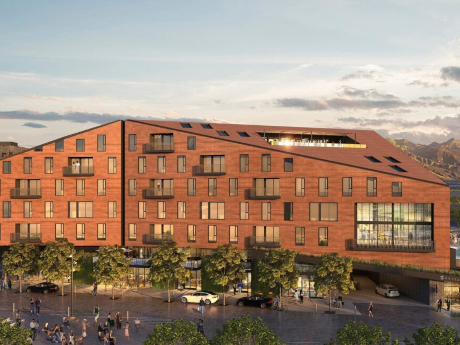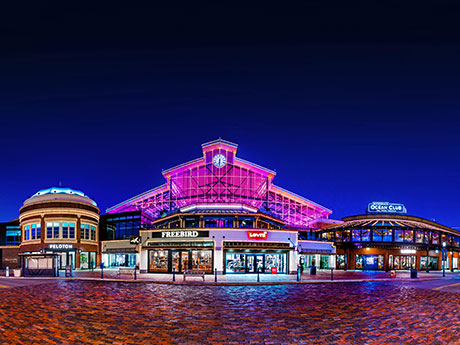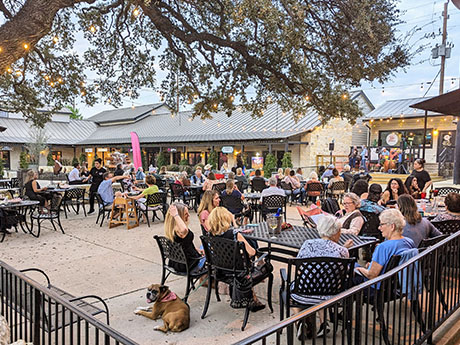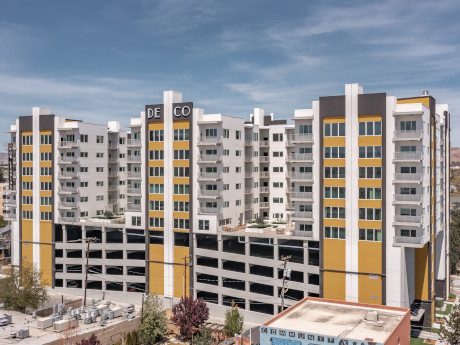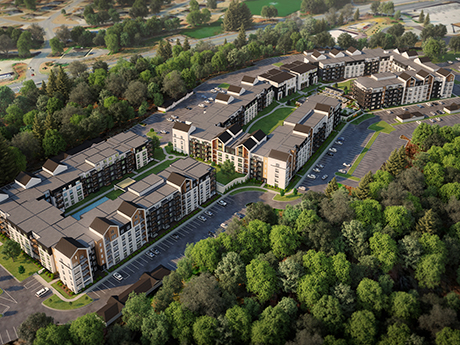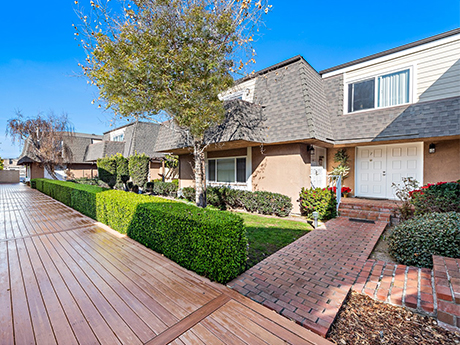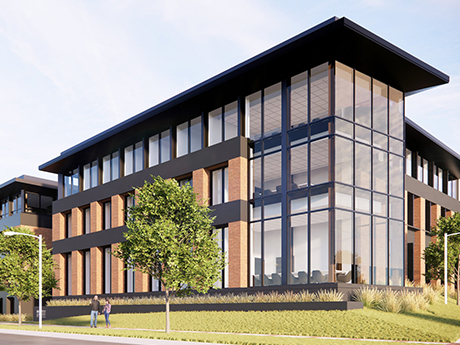By Chapman Brown of Marcus & Millichap Once renowned for its industrial prowess, Birmingham is experiencing a dynamic retail renaissance fueled by a convergence of local economic growth, strategic development initiatives and shifting consumer behaviors. As major retail projects come to fruition and submarkets heat up with investment activity, the city is poised for a transformative period that promises to redefine its retail landscape. Birmingham’s retail sector is intricately linked to broader economic trends both locally and nationally. Factors such as population growth, employment rates and disposable income levels significantly influence consumer spending habits and retail demand within the city. Additionally, the rise of e-commerce and changing demographics are prompting retailers and developers to adapt and innovate to stay competitive. These factors, combined with a diverse array of buyers and sellers, are driving retail investment activity. Institutional investors, private equity firms and real estate developers are among the key buyers, attracted by the city’s strong fundamentals and growth prospects. On the selling side, property owners and developers are seizing opportunities to unlock value and redeploy capital into new ventures. Several major retail projects are currently underway, poised to leave a lasting impact on the market. One notable project is The …
Market Reports
— By Kip Paul, vice chair; Michael King, director; and JT Redd, senior associate, Cushman & Wakefield — The Salt Lake City multifamily market has experienced significant growth in recent years. This reflects the influx of new residents to the State of Utah, in addition to notable increases in average household income. Developers have responded to this growing demand by delivering an unprecedented amount of rental housing inventory to the market. Since 2020, new deliveries averaged 12 percent of Salt Lake’s inventory base each year. Despite increases in apartment supply, overall fundamentals remain strong. Last year’s vacancy rates remained below 4 percent for the 12th consecutive year, while rental rates surged from $1,182 to $1,654 between 2020 and 2023. Salt Lake City’s renowned access to the outdoors and high quality of life place the city in a league of its own, positioning it to continue to capture apartment demand for years to come. What Sets Salt Lake Apart The Salt Lake City multifamily market stands out due to several key features. First, it offers affordability. Rental rates remain below 30 percent of residents’ average income despite overall increases in apartment prices. Second, Salt Lake City provides unparalleled access to outdoor …
By Spencer Jordan, Steiner + Associates The retail environment in Columbus, Ohio, is not just among the most unique and diverse in the Midwest, but in the nation. Columbus currently enjoys the fourth highest concentration of retail headquarters of any American city. Familiar names like Bath & Body Works, Victoria’s Secret, Express, Big Lots! and Chipotle all call Columbus home, and brands like Lululemon have significant logistics and distribution infrastructure in the city. But why is Columbus such a popular retail hub? What is the state of Columbus retail today? What sectors and neighborhoods are performing, and what are the trends to monitor when it comes to the future of retail in the Columbus market? Why Columbus? Among the many factors driving Columbus’s sustained retail success, the most important piece of the puzzle is the big picture: the city is thriving — and not just economically. Columbus placed eighth nationally in WalletHub’s recent rankings of all 50 state capitals, coming in ahead of popular high-profile markets like Denver, Nashville and Boston. The rankings are based on affordability, economic well being, quality of health and education, and quality of life. Columbus is one of the strongest Midwest markets in GDP per …
Economic development is, in many ways, the business of facilitating growth. Yet in Texas, thanks to an array of business- and development-friendly policies and laws, influxes of jobs, people and new real estate projects to support them sometimes seem to just happen naturally. When this kind of heavy growth is sustained over time, it can lead to less-affordable housing, more cookie-cutter retail scenes and heavier congestion and pressure on local infrastructure. But it is possible for smaller municipalities to embrace job and population growth with new real estate uses and projects in ways that don’t entirely compromise the historic charm or tranquility that many residents of these cities value. Revitalizing a downtown area — bringing in new businesses, adaptively reusing older buildings, creating pedestrian-friendly networks — is a primary means of marrying those objectives. When a successful downtown revitalization program is executed, the benefits tend to have a domino effect. Elevated foot traffic boosts sales at local businesses, increasing asset values over time and stimulating sales of properties. Other investors take note of the viable business plan, and the rest becomes history. But the whole process often starts with the visions of local business owners and the willingness of local …
— By Benjamin Galles, senior vice president, CBRE — The outlook for the Reno multifamily market in 2024 is similar to how the year panned out in 2023. There is significant interest in Reno from investors across asset types, earning us a ranking on Business Insider’s list of the top 15 hottest real estate markets for the next decade. Northern Nevada’s continued job growth has piqued investors’ interest in owning multifamily properties within the state. This growth will continue as existing companies expand their presence in the market, proving their commitment to the city and people of Northern Nevada. The current elevated construction costs and construction loan costs could pose a roadblock to developers meeting the anticipated demand in the next 12 to 24 months. That being said, there are currently 4,700 apartment units under construction in the market. This will likely be absorbed by people moving into Reno from outside the region. Unlike other markets we’ve seen across the country, very few loans in our region have maturities over the next 12 months. This means seller motivation in Reno remains low to moderate when it comes to offloading properties. The lack of debt events where owners will be pressed into a …
By David Wilson of Berkadia Birmingham’s apartment market has softened, which is consistent with trends both nationally and regionally in other Southeastern metros. But the market remains healthy and balanced despite a bump in new construction. With total employment gains exceeding 18,000 in 2023, a substantial jump from the 5,500-person gain in 2022, and unemployment rate falling to 2.2 percent, the Birmingham economy is as strong as it’s been in over 10 years, and the economic outlook is very favorable. The majority of population growth has been in the southern areas such as Shelby County, although a steady delivery of new Class A apartments in downtown Birmingham in recent years, and the opening of a Publix grocery in 2017 on the ground level of the 436-unit 20 Midtown development, is helping the city core to grow. Research by Berkadia Birmingham reveals 12 properties comprising 2,936 units are under construction in the Birmingham area, excluding Tuscaloosa. These properties reflect a cross-section of product types such as a purpose-built student property and an affordable Low-Income Housing Tax Credit (LIHTC) property. Four are in their initial site work phase, while another four are beginning preleasing. New developments In the thriving Highway 280 submarket, …
— By Pat Swanson, executive vice president, Colliers International — As Orange County enters 2024, its multifamily market stands at the brink of transformation, confronting challenges like softened rents, affordability dynamics and the resilience required in the face of tenant-related complexities. In the midst of a robust economy, the region grapples with obstacles and opportunities that will significantly shape the future of its real estate sector. Orange County’s economic vitality is evident, with a 5.2 percent growth in U.S. GDP and a thriving job market. However, the looming shadow of interest rate fluctuations and inflation above 3 percent has briefly slowed down real estate transactions. While rates are predicted to stabilize, the potential for modest reductions later in the year signals a period of nuanced economic growth and sustained higher rates. In 2024, Orange County’s multifamily housing market is set for change, departing from previous trends of rent increases. The region anticipates modest growth that will be influenced by factors like slower job growth, an influx of 510,000 new units and the mounting challenge of finding qualified tenants. Affordability takes center stage, with rent-to-income ratios reaching 29.8 percent. The widening affordability gap between owning a home and renting is further …
— By John R. Read, senior vice president, CBRE Retail Investment Properties-West — Undoubtedly, 2023 proved to be a volatile year. It was marked by persistent inflationary pressures, four 25-basis-point interest rate hikes by the Fed and a surge in the 10-year U.S. Treasury yield (from the high 3 percent range in January to peak levels near 5 percent in October). These changes had a pronounced impact on retail real estate investors, businesses occupying retail centers and consumers who frequented these establishments. The real estate sector particularly grappled with the cost of financing in an environment of higher interest rates. While these challenges did temper Orange County’s retail market to some extent, it largely remained resilient due to its strong underlying fundamentals. These include a substantial population of high-income earners, flourishing industries like tourism and destination-oriented shopping centers, as well as a supply constrained retail property base with limited large-scale retail development. The unemployment rate in Orange County remained steady at 3.8 percent in December 2023, unchanged from November’s revised rate. This rate is notably higher than the year-ago estimate of 2.7 percent. In comparison, California’s unemployment rate stands at 5.1 percent rate, while the national rate during the same …
By Brad Jones of Cushman & Wakefield/EGS Commercial Real Estate Despite ongoing challenges facing the national economy, Birmingham’s commercial real estate landscape remains steady and consistent. Over the past seven years, encompassing both pre- and post-pandemic periods, the overall vacancy rate for Birmingham’s multi-tenant office market has exhibited fluctuations like most markets, ranging from 12.9 percent in 2017 to 19 percent in 2023, according to research from Cushman & Wakefield/EGS Commercial Real Estate. However, for perspective, Birmingham’s year-end vacancy rate of 19 percent remains below the national average vacancy rate of 19.7 percent recorded in 2023, according to research from Cushman & Wakefield. Office leasing activity in Birmingham has maintained momentum, experiencing a notable 12 percent year-over-year increase from 2022. Total leasing activity for 2023 totaled 718,219 square feet. Class A transactions dominated with 564,681 square feet leased, indicating a continued preference for Class A office space (i.e. a flight to quality). This is good news for Class A product in this supposed period of economic slowdown. Office investment sales activity in Birmingham has, however, decelerated in the current economic climate. The impending ripple of debt maturities poses challenges for large institutional owners and creditors. At the same time, it …
By J. Wickam Zimmerman, CEO, Outside The Lines Inc. The use of artificial intelligence (AI) technology is growing in retail commerce, where it’s already helping businesses track inventory, forecast demand and suggest new products to consumers. But how does AI figure into retail real estate? Can it be used to enhance engagement and drive success at the properties themselves? Could it help entice shoppers to step away from their online shopping carts and venture out into the real world? The answer is a resounding yes, and we’re already seeing this play out in the Lone Star State. Creating Spaces That Attract & Retain With major Texas markets like Dallas-Fort Worth and San Antonio seeing record-high retail occupancy rates, many property owners are focused on capitalizing on this momentum. To keep foot traffic high and remain competitive with other local developments and online shopping, it’s more important than ever to create unique draws to centers. A key strategy involves creative placemaking and offering experiential destinations that are increasingly bolstered by technology, including AI. To stay ahead, retail centers today must offer an experience that can’t be replicated virtually. This requires having dynamic, interactive onsite features and leveraging technologies that are just …


